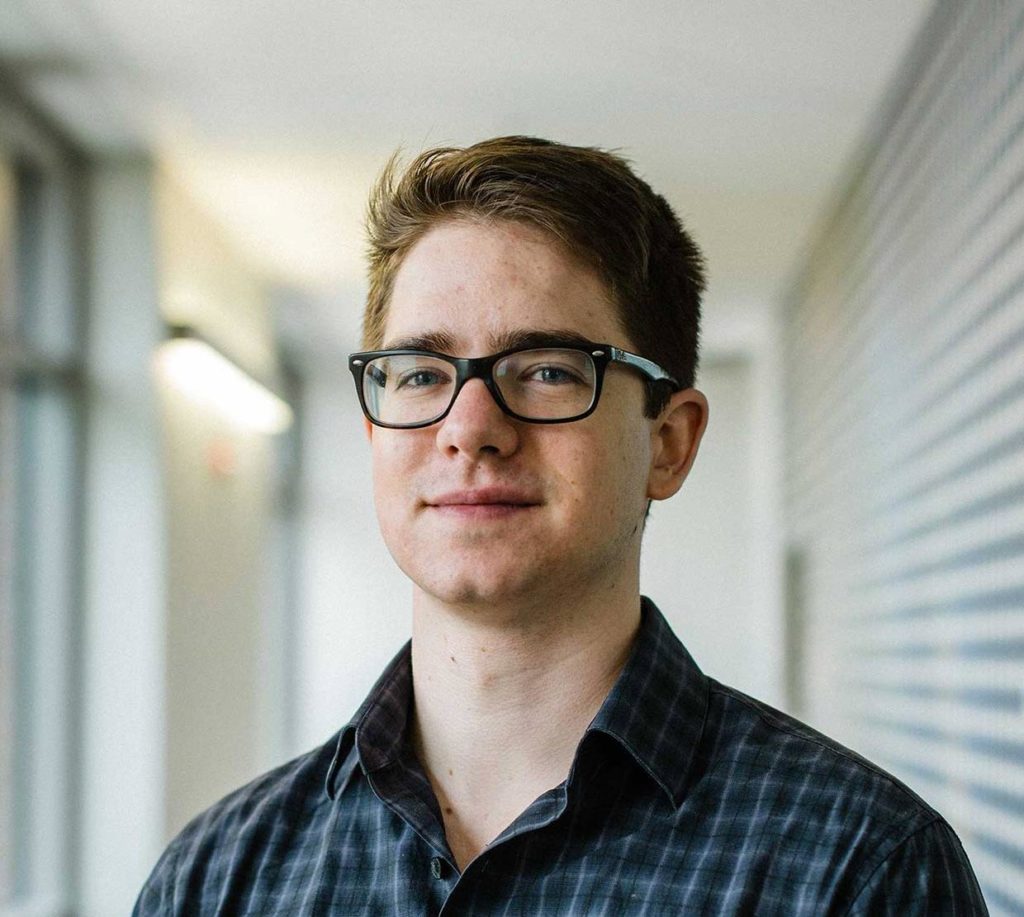Three OSU Physics alums are among 2,046 graduate students nationwide to receive the NSF Graduate Research Fellowships Program award that pays stipend and partial tuition for 3 years. Congratulations to all three! See the Impact article from the College of Science for some more details about other College of Science GRFP recipients.

Mirek Brandt (BS in Physics & Mathematics 2018) worked in the Graham group while at Oregon State. His thesis was on The Impact of Crystal Morphology on the Opto-Electronic Properties of Amorphous and Organic Crystalline Materials. He won a Goldwater Scholarship as an undergraduate and then moved on to the University of California at Santa Barbara where he is doing his doctorate in Astrophysics.

Katelyn Chase (BS in Physics 2018) worked in Bo Sun’s biophysics laboratory during her time at OSU and wrote her thesis on Synchronized Cellular Mechanosensing due to External Periodic Driving. She is now a Ph. D. candidate at the Lewis-Sigler Institute for Integrative Genomics at Princeton University, conducting research in the Gitai bacterial biology laboratory, studying cytoskeletal proteins. She is interested in proteins involved in bacterial cell shape formation and maintenance. Her photo shows her in Iceland in January.

Patrick Flynn (BS in Physics and Mathematics, 2018) did his senior thesis project on Localized structures in a diffusive run and tumble model for M. xanthus, as part of the Complex Systems REU at the University of Minnesota with Arnd Scheel (Bo Sun was the local advisor). Patrick also contributed to the linear solver code for the Monte-Carlo simulations performed in David Roundy’s research group in Physics. Patrick is now a Ph. D. candidate in the Department of Applied Mathematics at Brown University. He is studying the Euler- and Vlasov-Poisson models appearing in plasma and astrophysics. His NSF GRFP proposal was about answering questions such as the existence and stability of solitary waves, or the existence of solutions containing many interacting solitary waves, for the Euler- and Vlasov-Posson equations. Patrick says he is “very enthusiastic about being able to address questions that have been partially addressed by the physics community to discover new mathematics, and in turn inform scientific discovery. Of course, my time at Oregon State was very formative in this regard, and I still heavily rely on what I learned in the mathematics and physics programs there. After all, I first learned what a dispersion relation was from David Roundy!” The accompanying picture shows Patrick on the Brown Campus.
See the Impact article from the College of Science for some more details about College of Science GRFP recipients.

